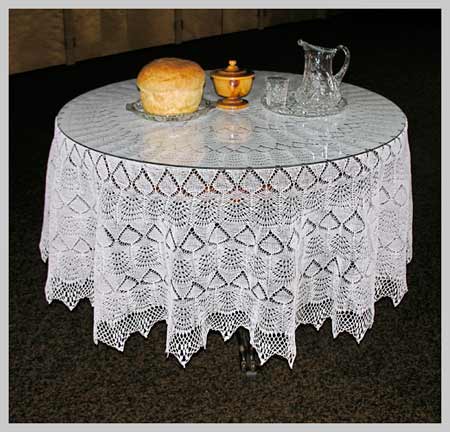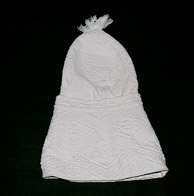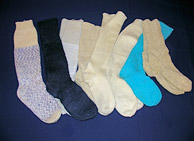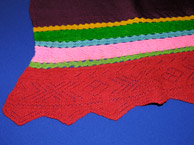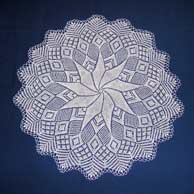About Doukhobor Knitting
Knitting needles were probably one of the possessions brought from Russia by the Doukhobor immigrants. One CIS member remembers that her grandmother may have used spokes from an old bicycle wheel as knitting needles. These early settlers did not have any patterns, but through examples of knitted Russian garments were able to duplicate patterns for sweaters and other warm clothing. An example of a knitted cotton woman’s toque, made in Russia, demonstrates the intricate geometric lattice and diamond patterns in purl stitches on a plain background. Doukhobor women learned “by doing.” To bring income to communities, men went to work on railway construction and to lumber camps which were cold work environments during the winter season. Women knit warm sweaters, stockings, toques, and mitts for their family members from homespun wool yarn.
Decorative knitting trimmed edges of heritage wool “zanaveski”, bedcoverings and linen towels. Early woven tablecloths were decorated with knitted or crocheted linen edgings.
In the 1940s, with the availability of fine cotton yarns, lace head scarves and aprons were knitted. Doilies became very popular as printed commercial patterns could now be easily purchased.
Knitting continues to be a hobby for many Doukhobor women who create beautiful afghans, sweaters, mitts, scarves, toques, lap robes, baby sweaters and blankets, slippers and a variety of toys. Some still continue to knit the warm stockings.
To this day, a large decorative knitted cloth covers a small table on which a pitcher of water, a loaf of bread, and an intricately carved salt keeper – the essentials of life – are placed, the traditional symbolic items present at every meeting of the Doukhobors.
